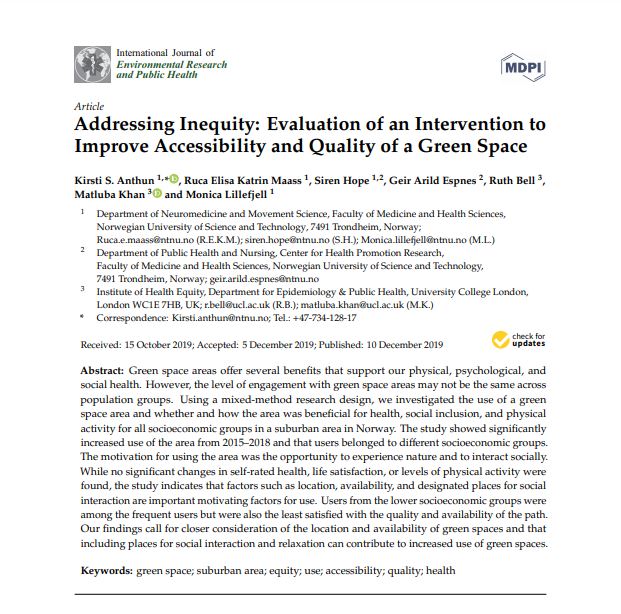
Addressing Inequity: Evaluation of an Intervention to Improve Accessibility and Quality of a Green Space
Green space areas offer several benefits that support our physical, psychological, and social health. However, the level of engagement with green space areas may not be the same across population groups. Using a mixed-method research design, we investigated the use of a green space area and whether and how the area was beneficial for health, social inclusion, and physical activity for all socioeconomic groups in a suburban area in Norway.
The study showed significantly increased use of the area from 2015–2018 and that users belonged to different socioeconomic groups. The motivation for using the area was the opportunity to experience nature and to interact socially. While no significant changes in self-rated health, life satisfaction, or levels of physical activity were found, the study indicates that factors such as location, availability, and designated places for social interaction are important motivating factors for use. Users from the lower socioeconomic groups were among the frequent users but were also the least satisfied with the quality and availability of the path. Our findings call for closer consideration of the location and availability of green spaces and that including places for social interaction and relaxation can contribute to increased use of green spaces.
View the Full-Text at the International Journal of Environmental Research and Public Health
Keywords: green space; suburban area; equity; use; accessibility; quality; health








